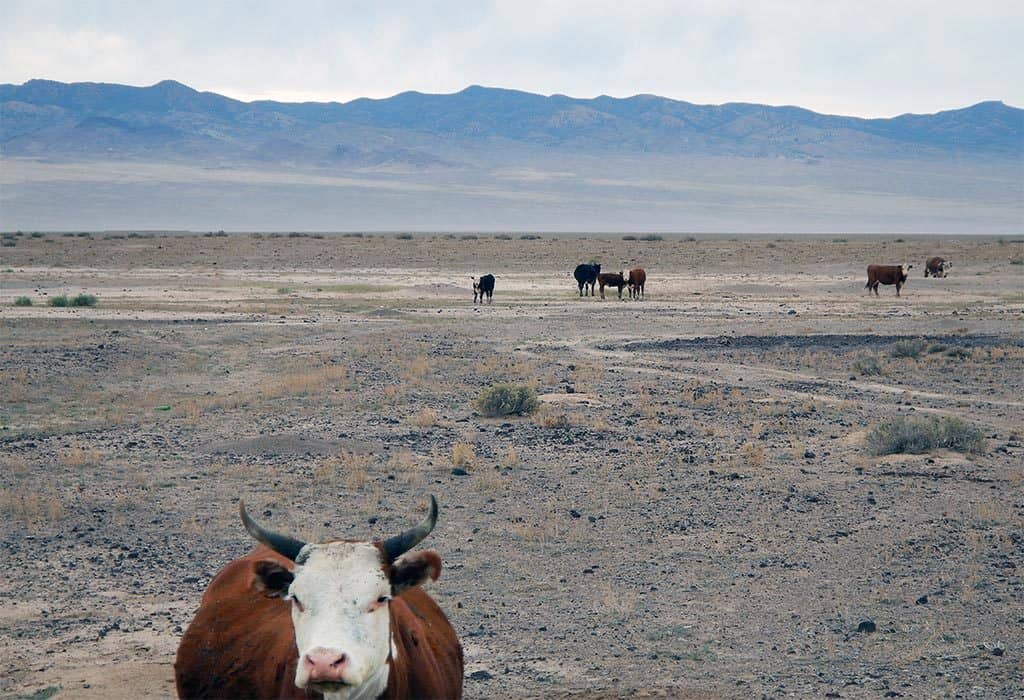Permit retirement is economically rational, fiscally prudent, socially just, politically pragmatic, and ecologically necessary.
1. Existing law does not allow for the permanent retirement of grazing permits. The laws governing Bureau of Land Management and Forest Service management of public lands generally require both agencies to issue grazing permits wherever the land is deemed capable of supporting livestock grazing. Further, if a permittee voluntarily waives his/her permit, the laws require agency managers to issue a permit to a new applicant. Currently, WildEarth Guardians is working with the Forest Service to administratively retire grazing permits of willing permittees for a period of 10 years (the duration of a grazing permit). However, this process takes a significant amount of time for each permit, and at the end of the 10 years the Forest Service will have the opportunity to open the application process and issue a new permit, eliminating the ecological gains achieved over the previous 10 years. Federal legislation is necessary to make these and all future administrative retirements permanent.
2. Retiring grazing permits saves tax dollars. The federal grazing program is heavily subsidized and costs American taxpayers over $117 million a year. In Fiscal Year 2014, the BLM and U.S. Forest Service spent $134 million on grazing management, but only reported collecting $17 million in grazing fees. Considering the additional direct and indirect costs not included in a 2005 GAO report, it is estimated that federal public lands grazing on BLM and Forest Service lands may cost as much as $500 million to $1 billion annually. The GAO reports that in Fiscal Year 2016, the BLM and U.S. Forest Service spent $135.9 million on grazing management, but only reported collecting $26.5 million in grazing fees. Every acre that is retired from livestock grazing saves taxpayers money (Source: Congressman Adam Smith, co-author of the Rural Economic Revitalization Act).
3. Removing livestock from public lands protects and restores habitat for native fish, birds, and wildlife, and improves water quality and quantity. Cattle grazing is environmentally destructive, and the impacts are exacerbated by climate change. From bacterial water pollution to denuded streambanks, introduction of invasive plants to native species’ extinction and hostility towards native carnivores by the livestock industry, cattle grazing has dramatically altered the ecology of the American West. The fewer cows there are congregating along streambanks, the faster streams, wetlands and riparian areas—which are essential for up to 95% of wildlife and bird species, not to mention fish and riparian-obligate species—will recover. A reduction in the number of cows on public lands will enable native plant species to outcompete invasive species, improve wildlife and bird habitat, and provide for better hunting, fishing, birding, and hiking on public lands. Limiting grazing on public lands will also likely result in fewer new listings of endangered species and also speed recovery of species already on the endangered species list.
4. Alternative uses of public lands contribute significantly more income to local and regional economies than livestock grazing. Tourism in Arizona generates an average of $50 million per day. Birders spend $820.7 million annually in Arizona, pumping more money into the state economy than even the golf industry. Public lands grazing, on the other hand, contributes little to Arizona’s economy as a fraction of 1 percent of the state economy. Utah sportsmen annually spend more than the combined cash receipts from the cattle and dairy sectors—the state’s top two agricultural commodities—$696 million versus $631 million (Source: Adam Smith). In New Mexico, the outdoor recreation industry creates 99,000 direct jobs, compared with 42,000 jobs created by all forms of agriculture (Sources: Outdoor Industry Association and New Mexico State University).
5. Permit retirement provides public-lands ranchers with more options. When a rancher willingly retires a grazing permit, he/she gets fully compensated for the market value of that permit. The rancher can then use this money to retire, pay off debts, restructure operations on private lands, or invest in new economic opportunities that would benefit communities by creating new sources of income, tax revenue, and employment.
